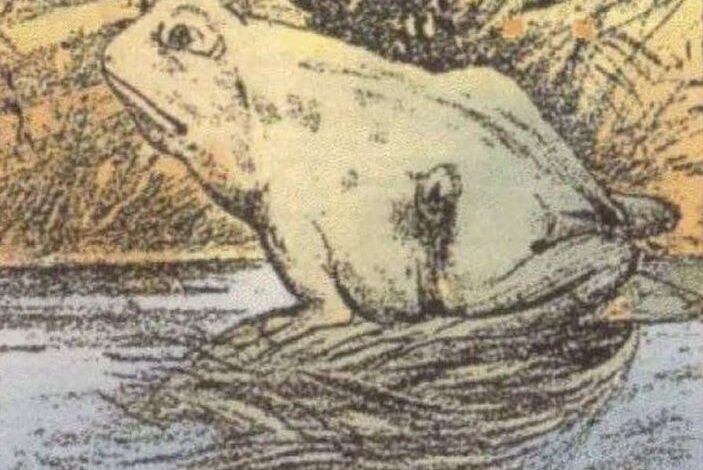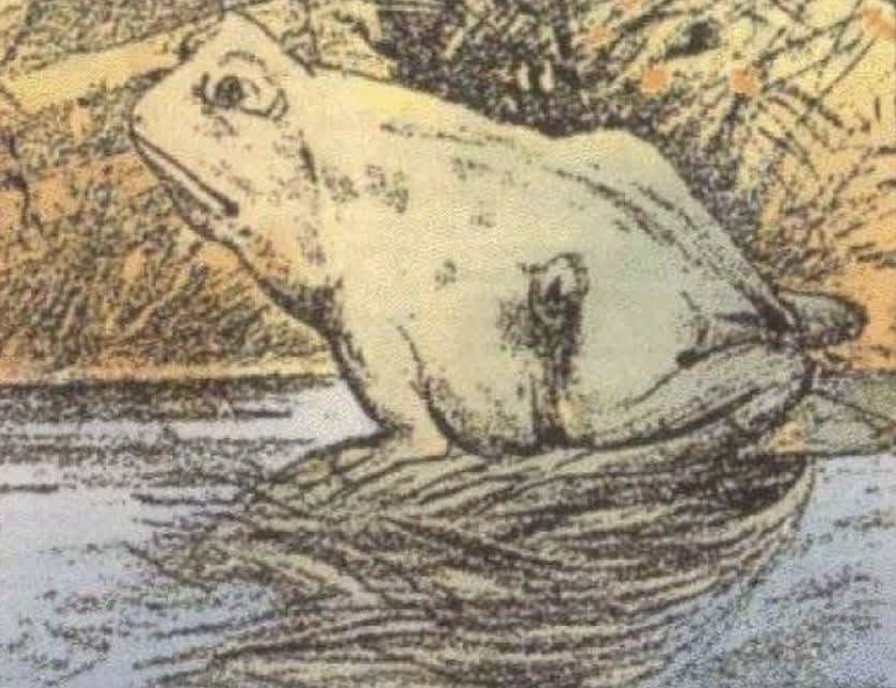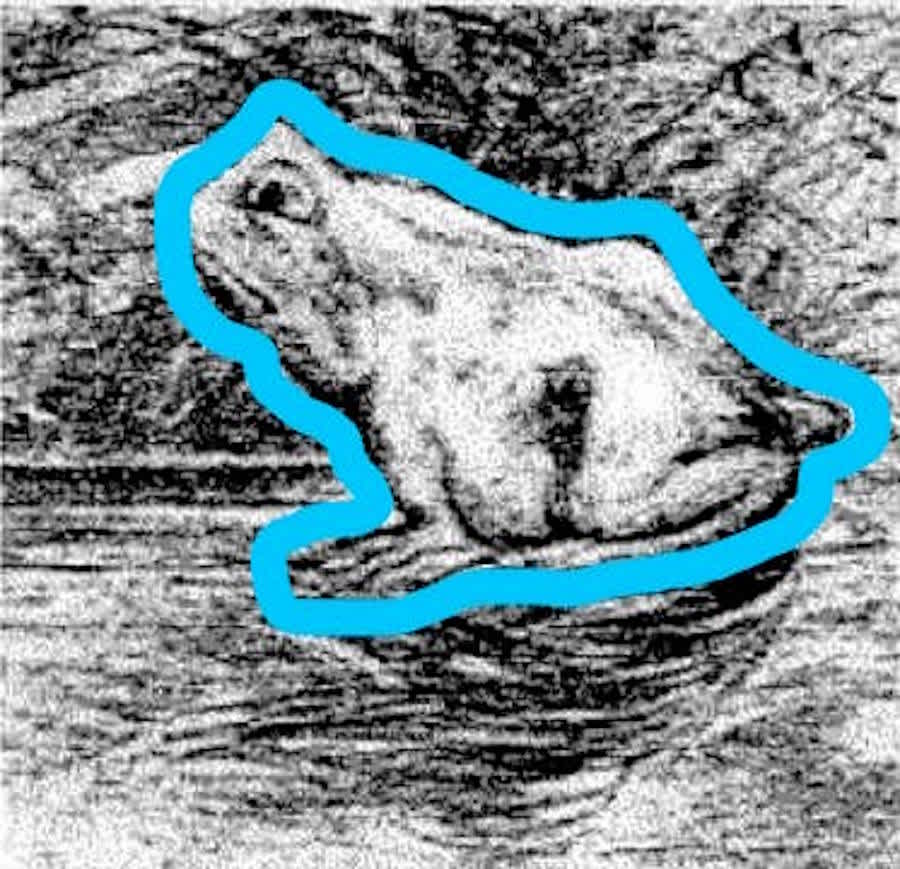People are having trouble locating the horse hidden in this ordinary frog photograph.

Engaging in visual brain teasers is an excellent way to energize and test your cognitive abilities. These enthralling “optical illusions” demonstrate how our visual perception can be deliciously deceptive.
Susana Martinez-Conde, the director of the visual neuroscience laboratory at the prominent Barrow Neurological Institute in Phoenix, Arizona, delves into the world of such illusions and explains their significance:
“These enthralling mysteries are profoundly important in visual research because they provide us with insights into the intricate workings of visual processing in both normal and compromised brains.”

As a result, these visual puzzles have dual value, not only as enjoyable diversions but also as cognitive enhancers, boosting intellect!
The frog image under consideration serves as a reminder that appearances can be deceiving and that this seemingly unremarkable image conceals an intriguing truth.
Yes, the image depicts a frog, but is there more to it than meets the eye? Adopt a critical look, avoid succumbing to the enigma too quickly; invest time and patience, and a revelation will gradually dawn on you—this frog image conceals a species of an altogether different lineage! To be more specific, classifying this as an optical illusion may not be accurate.
The reasoning behind this is that the curiosity in this image goes beyond the optical mechanics that happen within the eye. Instead, it goes into the brain’s labyrinthine workings, the picture perception and cognition hub.
“The brain, in its ceaseless endeavor to navigate the world, constantly assembles perceptions, an evolutionary mechanism that bolsters our survival,” says Mark Changizi, a distinguished neurobiologist and assistant professor of cognitive science at Rensselaer Polytechnic Institute. However, some of these structures may be composites.”
Allow your gaze to rest on the image in front of you. Are you staring at the frog, possibly by a pond or against a lush backdrop? Don’t worry if the elusive hidden element within the frog image eludes your initial sight.
The task is not trivial! Discovering the hidden presence requires a keen eye and a keen curiosity. Even the most astute observers may miss the secondary figure for a brief moment. To be sure, my first attempt was fraught with difficulties!

Are you ready to reveal the hidden entity? Prepare for the revelation—here comes the horse!
Repeat your examination of the frog image, but the horse takes center stage this time. The horse’s face has received particular attention as it confidently enters the spotlight.
For those still looking for the equestrian presence, the image’s next iteration is primed to inspire an epiphanic response: “Ah, there it is!”
The transition is noticeable as you move around the image. As you flip the picture, the horse’s majestic countenance emerges, and the mystical metamorphosis begins—the horse’s visage materializes as if by magic!
Finally, the realm of visual brain teasers unfolds as an enthralling path by which we navigate the maze of perception and cognition. Susana Martinez-Conde’s explanation highlights their dual functions as entertainment and intellectual stimulation.
Braided with hidden dimensions, the seemingly simple frog image is a powerful reminder that the treasures of cognition frequently lie beyond the initial view. Accept the mystery, appreciate the disclosure, and marvel at the wonders that visual illusions invariably reveal!